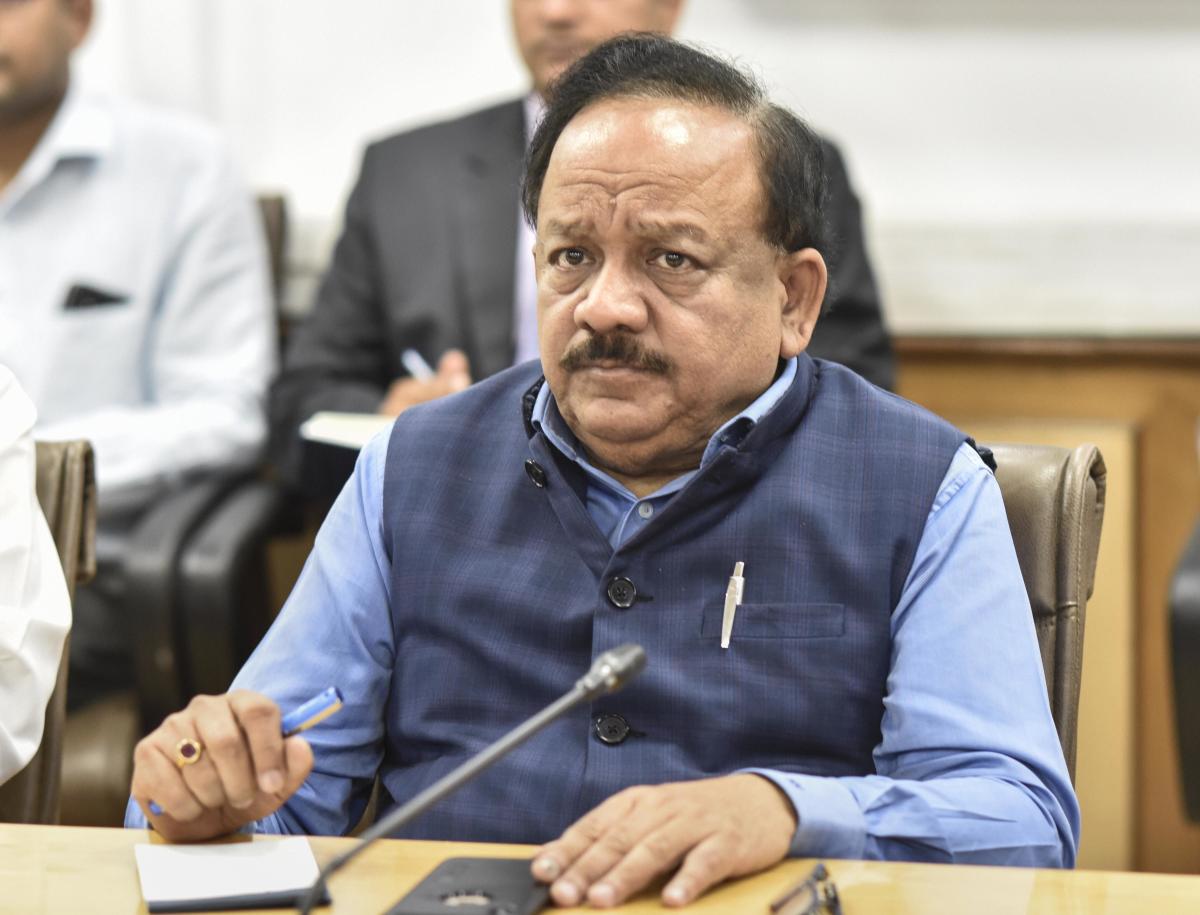Union Health Minister Harsh Vardhan on Saturday said that country’s scientists and health experts have been working on the development of an indigenous vaccines and in the upcoming six to seven months India will have the capacity to vaccinate about 30 crore people.
Addressing the 22nd Group of Ministers (GoM) meeting on COVID-19, Health Minister said, “Our scientists and health experts have worked on the development of a vaccine by genome sequencing and isolation of the coronavirus and developed an indigenous vaccine. In 6-7 months, we will have the capacity to inoculate about 30 crore people.”
#IndiaFightsCorona #Unite2FightCorona@drharshvardhan chaired 22nd meeting of Group of Ministers (GOM) on #COVID19. He said “We need to be expeditious in vaccinating 30 cr of the Target Population.”https://t.co/mfOmU1LoYf pic.twitter.com/OQ2OZm42UT
— Ministry of Health (@MoHFW_INDIA) December 19, 2020
The Health Minister said, “There have been a little over one crore cases of COVID-19 in India. Of that, 95 lakh 50 thousand cases have recovered successfully. India has one of the highest recovery rates in the world at 95.46 per cent.”
During his address, he praised Prime Minister Narendra Modi for his “exemplary leadership” throughout the coronavirus pandemic. “…I would like to thank all of you, in particular, our Prime Minister Narendra Modi, who has provided us exemplary leadership throughout the last one year, leading from the front and monitoring everything very very meticulously.
Even now when we are into the vaccine development, he himself is visiting each and every laboratory in the country,” he said. This comes after India’s COVID-19 case tally crossed the 1-crore mark.
#AatmanirbharBharat का सपना उद्योग जगत की भागीदारी के बिना पूरा नहीं हो सकता।
यह बात भला PM श्री @narendramodi जी से बेहतर कौन समझ सकता है। #ASSOCHAMFoundationWeek में उनका यह कहना कि आज हमें Plan भी करना है और Act भी करना है, बेहद प्रासंगिक है।
@ASSOCHAM4India @PMOIndia pic.twitter.com/HGzJv9P3r1
— Dr Harsh Vardhan (@drharshvardhan) December 19, 2020
Observing the fact that despite festivals in the month of October and November, no new surge of cases were observed in this period, the Union Health Minister and Chairperson of the GOM reiterated his concern and appeal to diligently maintain COVID Appropriate Behaviour even at a time when the country is at the cusp of authorizing the first set of vaccines.
YOU MAY LIKE TO READ: Those Who Recover From Infection Also Should Follow COVID-Appropriate Behaviours: Health Ministry
According to an official release, he also expressed the need for an expeditious vaccination drive to cover all the target populations estimated to be around 30 crores.
Dr Sujeet K Singh, Director (NCDC) presented a detailed report on how the data-driven graded government policies have helped India achieve significant control over the pandemic.
Dr Singh presented a granular analysis of the trajectory of the pandemic in each state pointing out critical parameters like positivity, RAT & RT-PCR per cent breakup, the concentration of cases in particular districts and other trends like a fatality, and fatality within 48 and 72 hours of hospitalization.
Dr Vinod K Paul, Member (H) NITI Aayog apprised the GoM on three critical aspects of vaccination; the process of a pre-clinical and clinical trial of all vaccines, the details of the six vaccine candidates undergoing trial in India. Moreover, he also briefed the GoM about requests for vaccines received by the Ministry of External Affairs from 12 other countries.
Chaired the 22nd GoM meeting to review the current #COVID19 situation.
Progress of #vaccine development efforts & preparedness for its distribution were discussed in detail.@PMOIndia @MoHFW_INDIA pic.twitter.com/fV04k10p9J
— Dr Harsh Vardhan (@drharshvardhan) December 19, 2020
Union Health Secretary Rajesh Bhushan noted the importance of Health Seeking Behaviour among the population as a key driver in checking fatality.
Explaining the paradox of some States /UTs reporting very high cases but minimal fatalities while others reporting low cases but comparatively high fatalities, he said that this phenomenon results from people not coming forward for testing even if they are symptomatic in the second category of states, the release said.











